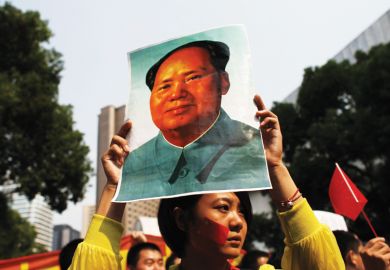Last week’s A-level results day may have been a defining moment for 18-year-olds in England, but it was nothing compared with China’s gao kao results day two months earlier.
Education is seen as the most straightforward route to upward social mobility in modern China, and some students prepare for the country’s national university entrance exam from the age of three.
The gao kao was introduced in 1952 with the aim of fostering equality of opportunity. And, after all vocational institutions were merged into universities in 1991, it became the highly competitive core of China’s entire education system. Preparation is arduous and stressful. Many schools’ schedules involve 13 hours a day of lectures and studying, plus an hour for exercise. This leaves no time for art or music, and students manage only about five hours of sleep a night, plus an hour’s nap during the day.
While the gao kao has partly fulfilled its egalitarian mission, it has also created its own injustices. It is now undergoing a series of trial-and-error changes ahead of a national reform that will be finalised next year.
One problem is that while student enrolment does not have regional restrictions (although many students prefer to stay in their native regions), some provinces have better schools. To level the playing field, each province and provincial-level city prepares its own exams (overseen by the Ministry of Education), and students’ scores are calculated against the provincial average.
Gao kao regulations stipulate that students must sit the exam in the area where they have their household registration (hukou). However, the increasing mobility of the labour force has led to a series of unforeseen predicaments that have yet to be addressed at a national level.
The first generation of rural migrant workers, who arrived in big cities during China’s rapid urbanisation, tended to leave their families behind. Now, however, most send their children to school where they work. Because those children must sit the gao kao in the poorer, rural areas where their parents are registered, they gain a big advantage over their rural peers, who do not have access to the same quality of education.
Migrant families complain that their children cannot take the gao kao in the cities where there is a greater choice of high-quality universities, such as Guangzhou. Sometimes, however, having hukou in small but wealthy cities such as Shenzhen, or small but less developed cities such as Lanzhou, can be advantageous, because there is less competition. This leads to corrupt practices that are resented equally by the hard-working middle classes and the urban poor.
Families with the financial means and networks have begun moving their hukou to such cities, earning the nickname of “gao kao migrants”. Alternatively, if their hukou is already in one of these cities, they can pull some strings or make a “donation” to ensure that their children can attend schools with high gao kao achievement rates even if they are in different localities.
There are other problems, too. China’s ethnic minorities have affirmative action points added to their gao kao score to compensate for structural inequalities, such as speaking Mandarin as a second language. This has proved helpful, but some minorities, such as the Hui, do not have a linguistic barrier, so those among them who have access to high-quality secondary education are resented for enjoying an undue advantage.
On the other hand, the additional points may not be enough to overcome the multitude of structural inequalities faced by minorities in autonomous regions and rural areas. In the most recent trial reform, they are encouraged to choose vocational universities that require lower scores. But vocational training does not offer professional opportunities in China, so the reform, aimed at lowering demand for top-tier universities, is being criticised for narrowing the life chances of the already disadvantaged.
Meanwhile, to address the stress of the gao kao, some provinces, such as Guangdong, and provincial-level cities, such as Shanghai, are experimenting with a dual system that permits university application via a personal portfolio and interview instead of the gao kao. But this has led to further gaps between the haves and have-nots; providing portfolio-building extracurricular activities for urban middle-class children is already becoming an industry.
Whatever reforms are settled on, they seem unlikely to satisfy everyone.
Ceren Ergenc is an associate professor in the department of China studies at Xi’an Jiaotong-Liverpool University in Suzhou.
POSTSCRIPT:
Print headline: Big country, big headaches
Register to continue
Why register?
- Registration is free and only takes a moment
- Once registered, you can read 3 articles a month
- Sign up for our newsletter
Subscribe
Or subscribe for unlimited access to:
- Unlimited access to news, views, insights & reviews
- Digital editions
- Digital access to THE’s university and college rankings analysis
Already registered or a current subscriber?







